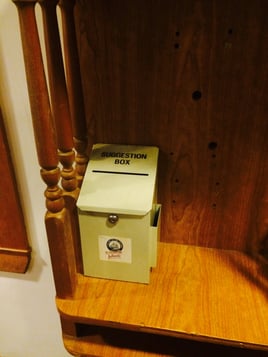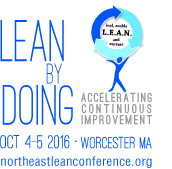A Blog About Understanding The Toyota Production System and Gaining Its Full Benefits, brought to you by "The Toast Guy"

Space Junk
 Last weekend in the Nantucket ferry terminal, I passed a defunct phone booth, the ornate wooden kiosk kind that was used twenty years ago to frame a payphone, provide a modicum of privacy, and hold a phone book. It appeared that this particular phone booth had been re-purposed to hold a suggestion box; or maybe the suggestion box was also defunct. Who knows? I picked it up and shook it; it was empty. And there were no blank suggestion forms in the side slot. These thoughts crossed my mind as I viewed the payphone/suggestion box combo:
Last weekend in the Nantucket ferry terminal, I passed a defunct phone booth, the ornate wooden kiosk kind that was used twenty years ago to frame a payphone, provide a modicum of privacy, and hold a phone book. It appeared that this particular phone booth had been re-purposed to hold a suggestion box; or maybe the suggestion box was also defunct. Who knows? I picked it up and shook it; it was empty. And there were no blank suggestion forms in the side slot. These thoughts crossed my mind as I viewed the payphone/suggestion box combo:
- In this bustling terminal where customers crowded to catch the last boat to the mainland, someone might have written a suggestion if there had been pencil and paper. Notwithstanding my jaundiced view of the effectiveness of locked suggestion boxes, this particular one might as well have read: “We don’t really care.”
- When the phone company removed the payphone, probably a decade ago, all that remained was an empty kiosk. The functional part of the phone booth had been stripped leaving a useless shell.
These are two different kinds of space junk, a term I’ve borrowed from NASA that describes the half-million pieces of accumulated debris left behind by decades of astronautical experiments; except in this case, the stuff is floating around in our offices and factories and labs and ORs and warehouses.
The first kind of space junk, epitomized by the suggestion box, represents a system that is apparently in place, but is not purposeful and probably even counterproductive since it does not demonstrate understanding or commitment. In fact, I frequently see suggestion boxes in this condition. Other common examples include:
- Taped lines left on the floor or signage left hanging from the rafters after a department re-layout
- Huddle boards with “to do” dates more than a year old
- Standardized work charts that bear no resemblance to the current condition
- Kanban racks overflowing with over-production – or conversely, empty
- ‘Employee of the Year’ postings last updated three years ago
At one point any of these experiments may have been purposeful, but now they’ve become monuments to stagnation and backsliding.
The second kind of space junk, represented in this case by the payphone-less kiosk, is debris that is left behind from old systems. Like the kiosk, this stuff appears to be re-purposed, but after a time it accumulates into a hodgepodge of hand-me downs. I’d wager, for example, that more than half of the seven-foot shop cabinets I see are leftovers from an earlier use. They are almost always too deep for the current use, creating FIFO problems and inviting storage of excess supplies, tools and materials. Other examples of this type of space junk include:
- Old desks turned into tables, perhaps to hold a printer plus “stuff” or maybe used as a lab bench
- A wall that once divided two different departments, now just blocks the line of site between two team members from the same department
- File cabinets and book cases re-purposed as fixture holders or walls
- Electrical and plumbing drops left from an earlier time; like the payphone kiosks it was just easier to leave them behind.
To be sure there are times when old stuff can be effectively re-purposed, but more often than not these attempts save a few pennies up front, only to add cost and strain later on: Many years ago, walking a convoluted conveyance route with a material handler, we came upon a floor scale that jutted into the route causing the employee to muscle the cart to the side of the aisle. I asked, “Who uses the scale?” The material handler didn’t know. In fact nobody knew or could remember when the floor scale was last used. Space junk.
I invite you to look around at the fixtures in your workplace and ask if they are really there to facilitate flow and make the job easier, or if they are just space junk. How many can you find and how do they impact your work? Please share a couple examples.
PS I can't believe it's only 40 days until the start of GBMP's 12th Annual Lean Conference. If you haven't yet, I urge you to check out the website, take a look at the agenda and consider joining us. I personally am looking very much forward to spending time with our community of hundreds of passionate Lean practitioners from manufacturing, health care, insurance and other industries and to our four exceptional keynote presenters - Art Byrne, John Shook, Dr. Eric Dickson and Steven Spear - not to mention the dozens of presentations, interactive sessions and The Community of Lean Lounge. What a line up! I sincerely hope to see you there.
